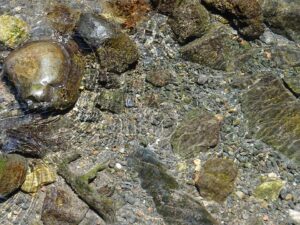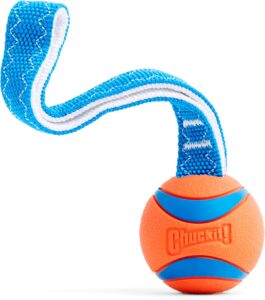
Reptiles, with their fascinating behaviors and striking appearances, have become increasingly popular as pets. However, these unique creatures come with their own set of care requirements, one of which is the process of shedding. Shedding, or ecdysis, is a natural and necessary process for reptiles, allowing them to grow and maintain healthy skin. Despite its importance, many reptile owners encounter shedding issues. This article delves into common shedding problems and provides actionable solutions to ensure your reptile’s well-being.
Understanding the Shedding Process in Reptiles
Shedding is an essential biological process that occurs as reptiles grow. Unlike mammals, reptiles do not shed skin continuously; instead, they periodically shed their outer skin layer in larger sections or as a whole piece. This process allows them to remove old skin and replace it with new, healthy skin. The frequency of shedding varies among species, age, and individual health. Younger reptiles tend to shed more frequently due to rapid growth, while adults may shed less often.
The Importance of Proper Shedding
Proper shedding is crucial for maintaining a reptile’s health. It ensures that the skin remains flexible and free of parasites while preventing infections. Incomplete or problematic sheds, known as dysecdysis, can lead to various health issues, such as constricted blood flow, retained eye caps, and bacterial infections. Understanding the signs of healthy shedding and potential problems is vital for any reptile owner.
Common Shedding Issues in Reptiles
Retained Shed
One of the most common shedding problems is retained shed, where pieces of old skin remain attached to the reptile’s body. This can happen due to insufficient humidity, improper diet, or inadequate hydration. Retained shed is particularly problematic around areas like the toes, tail, and eyes, where it can cause serious health issues if not addressed promptly.
Incomplete Shedding
Incomplete shedding occurs when a reptile fails to shed its skin entirely. This can be caused by stress, poor nutrition, or environmental factors. Incomplete shedding leaves patches of old skin on the reptile’s body, which can lead to discomfort and skin infections.
Retained Eye Caps
Retained eye caps are a specific issue where the outer layer of the eye does not shed properly. This is particularly common in snakes and can lead to impaired vision and discomfort. Retained eye caps are often a result of low humidity or dehydration.
Preventing Shedding Issues
Maintain Optimal Humidity Levels
One of the primary factors influencing shedding is humidity. Each reptile species has specific humidity requirements that must be met to facilitate proper shedding. For instance, tropical reptiles require higher humidity levels, while desert species need lower levels. Investing in a reliable hygrometer to monitor humidity and using misting systems or humidifiers can help maintain the appropriate environment.
Ensure Proper Hydration
Adequate hydration is crucial for successful shedding. Ensure that your reptile has access to clean, fresh water at all times. For species that require higher humidity, regular misting and providing a shallow water dish for soaking can help maintain hydration levels. Additionally, offering water-rich foods like fruits and vegetables can contribute to hydration.
Provide a Nutritious Diet
A balanced diet rich in vitamins and minerals supports healthy skin and shedding. Ensure that your reptile receives species-appropriate nutrition, including calcium and vitamin supplements if necessary. Dietary deficiencies can lead to poor skin health and shedding problems, so consulting a veterinarian or reptile nutritionist can be beneficial.
Create an Ideal Habitat
An appropriate habitat setup is essential for preventing shedding issues. This includes providing the right substrate, temperature gradients, and hiding spots. The enclosure should mimic the reptile’s natural environment as closely as possible. For arboreal reptiles, branches and climbing structures can assist in the shedding process.
Regular Health Checks
Routine health checks can help identify shedding issues early on. Monitor your reptile’s skin condition, eyes, and overall behavior for any signs of distress. Regularly weigh your reptile to ensure proper growth, as weight loss or stagnation can indicate underlying health problems affecting shedding.
Addressing Shedding Problems
Assisting with Retained Shed
If your reptile experiences retained shed, there are several methods to assist the process. Soaking the reptile in lukewarm water for 15-20 minutes can help loosen the skin. Gently rubbing the affected areas with a damp cloth or using a reptile-safe shedding aid can facilitate the removal of stubborn skin. However, avoid forcibly pulling off retained shed, as this can harm the reptile.
Dealing with Retained Eye Caps
Retained eye caps require careful attention. Increasing humidity and providing a moist hide can help soften the eye caps. If they do not come off naturally, consult a veterinarian for professional assistance. Attempting to remove eye caps without proper knowledge can cause injury to the reptile.
Seeking Veterinary Care
If shedding issues persist despite your efforts, consult a reptile veterinarian. Persistent problems may indicate underlying health conditions that require professional diagnosis and treatment. A veterinarian can perform a thorough examination and recommend appropriate interventions.
Conclusion
Shedding is a vital aspect of reptile care that requires attention and understanding. By maintaining optimal humidity, ensuring proper hydration and nutrition, and providing an ideal habitat, reptile owners can prevent common shedding issues. Regular monitoring and timely intervention are essential for addressing shedding problems and ensuring the health and happiness of your scaly companion. With the right care, reptiles can shed seamlessly, revealing their vibrant and healthy skin underneath. Embrace the responsibility of reptile ownership by staying informed and proactive in your pet’s care.
“`
#ChatGPT assisted in the creation of this article.








